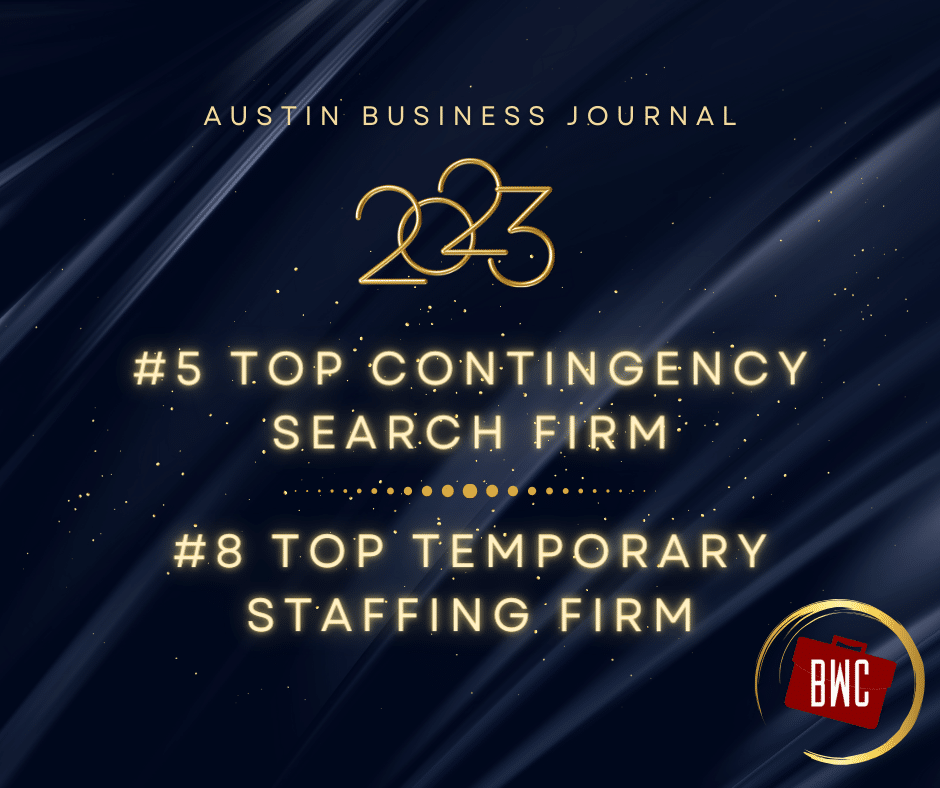Candidate Experience Is No Longer Low-Priority
You’re Kidding – We Lost Another Candidate?!

Not that many years ago, national labor market conditions favored the employer: There were few good jobs, and many good candidates, so employers didn’t have to make much of an effort to hire top talent or to focus on the candidate experience. Hey, post a good job, get dozens of great applicants, put them through your hiring process at your pace, make a low-ball salary offer that fits your out-of-touch compensation structure, and bam! – new hire. Easy, right?
The current labor market conditions are exactly the opposite: Every company is hiring, top candidates are in high demand, and the candidates are choosing their employers in 2018. The problem is that many HR teams, hiring managers and processes function as though we’re hiring in 2009…or 1989, in some cases.
Those approaches – and attitudes – simply will not work in today’s candidate-driven labor market. Worse, continuing to use outdated “company first” hiring models will significantly damage your company’s employer brand, making it still harder to recruit the top talent all companies need. (If you are asking yourself “Employer brand?” then that is one place to start to catch up to speed with today’s candidate-driven market.)
So surely every employer has already realized this and is well on their way to candidate-driven hiring models, right? Well, hmmm, no. Many employers are still working to get there, but some companies haven’t bothered to make any changes at all. In these outdated workplaces, hiring managers are puzzled as to why it’s so much harder to find top talent, why it takes so much longer to hire, why candidates are dropping out, why candidates are turning down offers (every candidate wants to work here, of course), how can this be?
“Well, we’ve always hired this way and never had any problems, it’s all those freaking millennials!” No Einstein – your thinking is backward and your hiring process is below average, at best – the candidates are in charge today. Companies must rethink and reinvent their recruiting and hiring processes to compete for talent. If our core candidate experience is poor, they’re not going to wait around until we figure it out, they’ll take the other job with the company that treats them well, moves forward quickly, stays in touch, and makes a competitive offer.
Metrics for Candidate Experience
Candidate experience surveys are becoming increasingly popular (think “employee engagement survey” for candidates) among enlightened companies, but broader surveys provide some useful insight. A few examples:
A survey of 1,200 professionals (candidates & employers) by CareerArc.com indicated that 60% of candidates have had a poor candidate experience recently, and nearly 60% of employers had read negative candidate reports on their company…but 28% had never even checked for online candidate reports.
The same survey indicated that employers routinely put candidates through an arduous, lengthy application and ATS data entry process (3-4 hours, on average) to even get into the “stack”, while 72% of employers spend less than 15 minutes to review the same application (that seems extremely generous, IMHO – think 90 seconds).
Fully 65% of candidates indicate that they NEVER receive any notification whatsoever about their application, and for those who do receive notice, 51% indicated that it takes a month or more to get feedback, and even then, it’s likely to be auto-generated and contain multiple errors. (Don’t even get me started on resume scanning technology and biased selection – future blogs await!)
Simple Changes, Significant Improvements
While a complete overhaul of recruiting and hiring processes requires a significant investment of time and resources, there are a few fairly simple changes that companies can make NOW that are likely to significantly improve the candidate’s hiring experience – and your hiring ratio!
1.Accelerate the Entire Selection Process. To expect a candidate to remain available for 4-8 weeks (or more!) while a company makes an offer decision is the best way to LOSE top talent.
- Take a hard look at your process and examine the timeline for recent hires.
- Identify bottlenecks using actual data, then work with leadership to develop reduced timelines.
- Obtain leadership commitment, monitor timelines of ongoing hires and communicate to executives.
2. Communicate Constantly. Whether or not your ATS is set up to do this, the HR/TA team must make it happen. Send a standardized (but personalized) email to active candidates at key steps, and at least once per week, even if there’s nothing new to report. How about a text? Or (dare I suggest) an actual phone call(!) to the candidate. Did you acknowledge their interview thank-you email? Keep the candidate engaged!
3. Anywhere, Anytime. Candidates must be able to access open positions anywhere, and that means using mobile platforms for postings and application/submittal portals. Remove the delay of having to “get to my computer” – enable mobile applications, or at least a way for the candidate to initiate mobile contact. Maybe follow up with a quick text to acknowledge the application, outline what happens next, anything that maintains contact with the candidate. Our candidates are mobile – our process must be, too.
4. Be Transparent with Candidates. This means the realities of the position, the company, the workload, the compensation, benefits, next steps, everything. Nothing wastes more time – and alienates more candidates – than a company’s lack of transparency around these key factors. The offer letter is WAY too late, folks.
5. Make Market-Competitive Job Offers with the First Offer. This has become a huge problem for many companies in today’s red-hot labor market. Take action immediately when a new position becomes available – examine valid market survey data for the position, then work with internal teams to update the salary range for the vacant position so that we’re offering market-competitive compensation to the selected candidate in the FIRST offer we extend. We can work on the internal equity issues along the way (or even after the hire), but we will absolutely fail to hire top talent by extending non-competitive salary offers.
These short-term actions may help your company turn “lost candidates” into new hires while working toward developing and implementing more significant long-term strategies. Over the long term, a comprehensive redesign of recruiting, selection, hiring and onboarding processes will likely be required – along with a realistic reevaluation of the company’s ATS and related tools.
But for now, implementing some of these tips can simply and quickly create a more positive candidate experience. Or, you can ignore this trend and see what happens, over and over again. Your call.






Leave A Comment